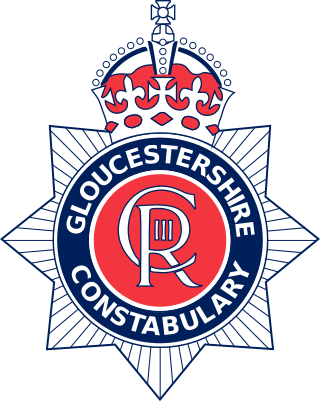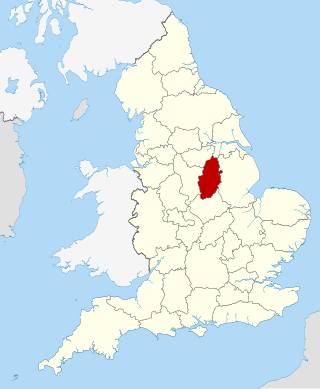Related Research Articles

Chief Constable is the rank used by the chief police officer of every territorial police force in the United Kingdom except for the City of London Police and the Metropolitan Police, as well as the chief officers of the three 'special' national police forces, the British Transport Police, Ministry of Defence Police, and Civil Nuclear Constabulary. The title is also held by the chief officers of the principal Crown Dependency police forces and the Sovereign Base Areas Police in Cyprus. The title was also held, ex officio, by the president of the Association of Chief Police Officers under the Police Reform Act 2002. It was also the title of the chief officer of the Royal Parks Constabulary until this agency was disbanded in 2004.

Avon and Somerset Police is the territorial police force responsible for law enforcement in the five unitary authority areas of Bristol, Bath and North East Somerset, North Somerset, Somerset, and South Gloucestershire, all in South West England.

Cambridgeshire Constabulary is the local territorial police force that covers the county of Cambridgeshire and Peterborough unitary authority. It provides law enforcement and security for an area of 1,311 square miles (3,400 km2) and population of 856,000 people, in a predominantly rural county. The force of Cambridgeshire includes the cities of Cambridge, Ely and Peterborough, the market towns of Chatteris, Huntingdon, March, Ramsey, St Ives, St Neots, Whittlesey, and town and Port of Wisbech. Its emblem is a crowned Brunswick star containing the heraldic badge of Cambridgeshire County Council.

Cumbria Constabulary is the territorial police force in England covering the unitary authority areas of Cumberland and Westmorland and Furness in the ceremonial county of Cumbria. As of September 2017, the force had 1,108 police officers, 535 police staff, 93 police community support officers, and 86 special constables.

Warwickshire Police is the territorial police force responsible for policing Warwickshire in England. It is the second smallest territorial police force in England and Wales after the City of London Police, with only 823 regular officers as of September 2017. The resident population of the force area is 554,002.

Durham Constabulary is the territorial police force responsible for policing the council areas of County Durham and Darlington in North East England. It does not cover all of the ceremonial or historic area of Durham, parts of which are covered by the neighbouring forces of Cleveland Police and Northumbria Police. The other neighbouring forces are Cumbria Constabulary to the west and North Yorkshire Police to the south.

Gloucestershire Constabulary is the territorial police force responsible for policing the non-metropolitan county of Gloucestershire in South West England.

The Hampshire and Isle of Wight Constabulary is the territorial police force responsible for policing the counties of Hampshire and the Isle of Wight in South East England.

Sussex Police are the territorial police force responsible for policing in the whole of Sussex. Their jurisdiction covers the ceremonial counties of East Sussex and West Sussex. Their headquarters are in Malling House, Lewes, East Sussex.

Nottinghamshire Police is the territorial police force responsible for policing the shire county of Nottinghamshire and the unitary authority of Nottingham in the East Midlands area of England. The area has a population of just over 1 million.

Lincolnshire Police is the territorial police force covering the non-metropolitan county of Lincolnshire in the East Midlands of England. Despite the name, the force's area does not include North East Lincolnshire and North Lincolnshire, which are covered by Humberside Police instead.

The West Yorkshire Constabulary (WYC) was, from 1968 to 1974, the statutory police force for the West Riding of Yorkshire, in northern England.

The County Police Act 1839 was an Act of the Parliament of the United Kingdom. It was one of the Police Acts 1839 to 1893. The Act enabled Justices of the Peace in England and Wales to establish police forces in their counties. The Act was not compulsory, and constabularies were only established in 25 out of 55 counties by 1856, when the County and Borough Police Act 1856 made their provision mandatory.

The Police Act 1964 was an act of the Parliament of the United Kingdom that updated the legislation governing police forces in England and Wales, constituted new police authorities, gave the Home Secretary new powers to supervise local constabularies, and allowed for the amalgamation of existing forces into more efficient units.

Somerset Constabulary was the police force responsible for policing the county of Somerset, England, between 1856 and 1967. It was formed as a result of the County and Borough Police Act 1856. This act made it compulsory for the county authorities to form a county police force which up until this point had not been done. During its 111 year history, five smaller police forces within Somerset were merged into Somerset Constabulary. These were Wells City Police and Glastonbury Borough Police in 1856, Yeovil Borough Police in 1859, Chard Borough Police in 1889 and Bridgwater Borough Police in 1940. Somerset Constabulary was amalgamated with Bath City Police on 1 January 1967 to become the Somerset and Bath Constabulary. As a result of the Local Government Act 1972 this new force was short lived, lasting just 7 years when on 1 April 1974 it became part of Avon and Somerset Constabulary which polices the area to this day.
The Bath City Police was a police force responsible for policing the County Borough of Bath in Somerset, England. It existed between 1836 and 1967. The Bath City Police, as an organization, was formed as a result of Municipal Corporations Act 1835, though it did not begin commencing duties until 15 February 1836. In 1852 the force had a strength of 86 police officers.

The history of law enforcement in the United Kingdom charts the development of law enforcement in the United Kingdom and its predecessor states. It spans the period from the Middle Ages, through to the development of the first modern police force in the world in the nineteenth century, and the subsequent modernisation of policing in the twentieth and twenty-first centuries.
The Liberty of Peterborough Constabulary was the territorial police force responsible for law enforcement surrounding 'The Soke of Peterborough', England, from 1856 to 1947. It was initially controlled by the Chief Constable of Northamptonshire Captain Henry Lambert Bayly 1857 - 1876. The constabulary had its headquarters in the old gaol behind the Sessions House on Thorpe Road in Peterborough.
Bridgwater Borough Police was a police force responsible for policing the borough of Bridgwater, Somerset in England from 1836 to 1940. The force was formed as a result of the Municipal Corporations Act 1835, Bridgwater being one of the 178 boroughs originally named in the Act. A government return from 1852 shows that the police force at that time had 5 police officers at a cost to the borough of £245 and 18 shillings for the previous year. Throughout its 104 year history its establishment was never more than 20 officers. In 1940 the force was abolished and voluntarily became part of Somerset Constabulary. Today the area is policed by Avon and Somerset Constabulary.
Wells City Police was the police force responsible for policing the city of Wells in England between 1836 and 1856.
References
- 1 2 "Police Reform Report" (PDF). lra.le.ac.uk. March 2016. Archived from the original (PDF) on 2018-04-09. Retrieved 2018-05-27.
- ↑ Commons, Great Britain Parliament House of (6 June 2018). "Accounts and Papers of the House of Commons". Ordered to be printed – via Google Books.
- ↑ Clark, Peter (2015). Police Reference: England & Wales. United States of America: Amazon. pp. E-491. ISBN 978-0-9858978-0-2.
- ↑ "History report" (PDF). www.asnarpo.org. July 2006.